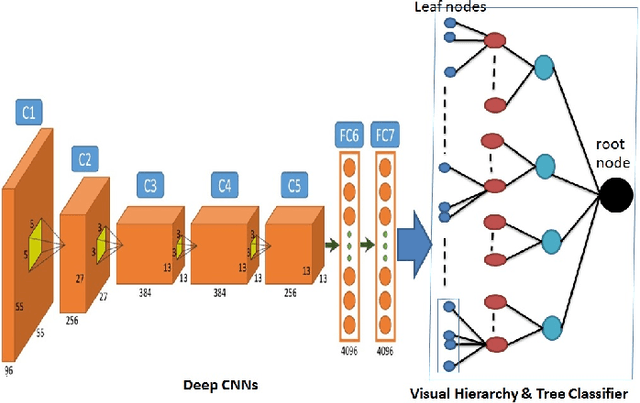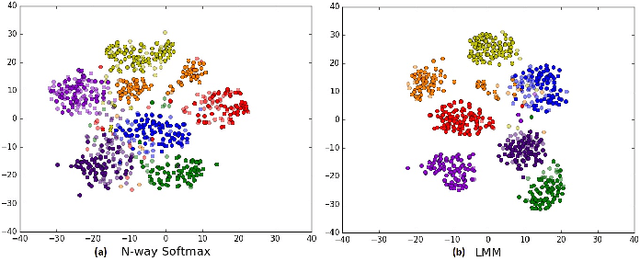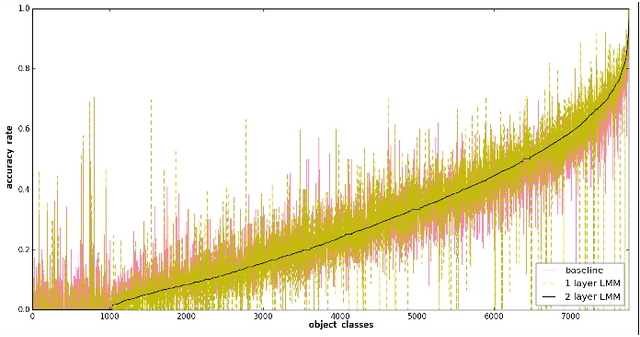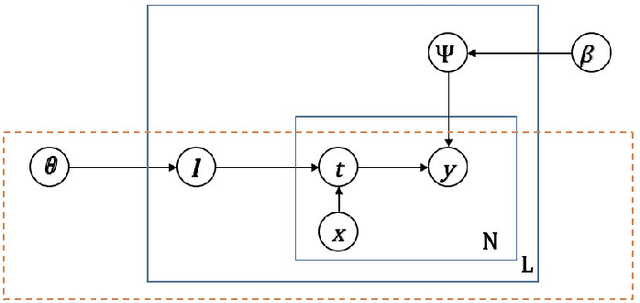Baopeng Zhang
Imitating Targets from all sides: An Unsupervised Transfer Learning method for Person Re-identification
Apr 10, 2019Abstract:Person re-identification (Re-ID) models usually show a limited performance when they are trained on one dataset and tested on another dataset due to the inter-dataset bias (e.g. completely different identities and backgrounds) and the intra-dataset difference (e.g. camera invariance). In terms of this issue, given a labelled source training set and an unlabelled target training set, we propose an unsupervised transfer learning method characterized by 1) bridging inter-dataset bias and intra-dataset difference via a proposed ImitateModel simultaneously; 2) regarding the unsupervised person Re-ID problem as a semi-supervised learning problem formulated by a dual classification loss to learn a discriminative representation across domains; 3) exploiting the underlying commonality across different domains from the class-style space to improve the generalization ability of re-ID models. Extensive experiments are conducted on two widely employed benchmarks, including Market-1501 and DukeMTMC-reID, and experimental results demonstrate that the proposed method can achieve a competitive performance against other state-of-the-art unsupervised Re-ID approaches.
Embedding Visual Hierarchy with Deep Networks for Large-Scale Visual Recognition
Jul 08, 2017



Abstract:In this paper, a level-wise mixture model (LMM) is developed by embedding visual hierarchy with deep networks to support large-scale visual recognition (i.e., recognizing thousands or even tens of thousands of object classes), and a Bayesian approach is used to adapt a pre-trained visual hierarchy automatically to the improvements of deep features (that are used for image and object class representation) when more representative deep networks are learned along the time. Our LMM model can provide an end-to-end approach for jointly learning: (a) the deep networks to extract more discriminative deep features for image and object class representation; (b) the tree classifier for recognizing large numbers of object classes hierarchically; and (c) the visual hierarchy adaptation for achieving more accurate indexing of large numbers of object classes hierarchically. By supporting joint learning of the tree classifier, the deep networks and the visual hierarchy adaptation, our LMM algorithm can provide an effective approach for controlling inter-level error propagation effectively, thus it can achieve better accuracy rates on large-scale visual recognition. Our experiments are carried on ImageNet1K and ImageNet10K image sets, and our LMM algorithm can achieve very competitive results on both the accuracy rates and the computation efficiency as compared with the baseline methods.
 Add to Chrome
Add to Chrome Add to Firefox
Add to Firefox Add to Edge
Add to Edge